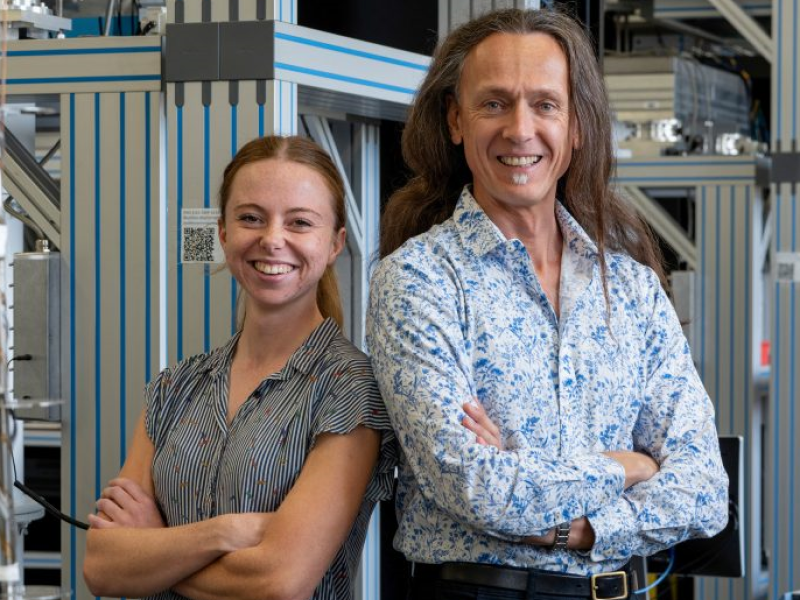Researchers at the University of New South Wales have claimed a world-first breakthrough by demonstrating provable quantum entanglement between two atoms in silicon, a crucial step for scaling quantum computers.
Entanglement between at least two qubits is the phenomena that enables information to be encoded and processed in a quantum computer. This was demonstrated by the UNSW-led team between two electrons on separate phosphorus atoms.
The phosphorus atoms were implanted on a silicon chip similar to those in modern day computers and electronics. It potentially enables future manufacturing scale up with existing chip fabrication techniques.

The breakthrough was published over the weekend in the scientific journal Nature Communications.
Lead author Dr Holly Stemp said it is not the first time quantum logic operations have been attempted in this way but is the first to demonstrate that two atoms have been entangled with such a high degree of confidence.
Dr Stemp said that phosphorus atoms are excellent at storing quantum information but because they are so small it is difficult to “make them ‘talk’ to each other, let alone create genuine quantum entanglement”. From the strength of the entanglement interaction, the atoms were separated by around 20 nanometres, just one thousandth of the thickness of a human hair.
“This is, in fact, the first time the provable entanglement has been created between two atoms in silicon,” Dr Stemp said.
Research team lead Professor Andrea Morello explained that entanglement is “the real gamechanger” of quantum computing as it allows the creation of “digital codewords that really do not exist in a classical computer”.
The phenomena is hard to prove as quantum entanglement is a fragile state that is difficult to maintain, with the demonstrations in the paper lasting around 200 microseconds.
Experts from the Sandia National Laboratories in the US helped the UNSW-led team deliver sophisticated techniques to quantify how perfectly the quantum operations entangled the atoms.
Professor Morello is one of the co-authors on a patent owned by UNSW that describes the quantum logic operations used in the latest breakthrough, which has yet to be licensed.
He told InnovationAus.com the demonstration builds on a previous breakthrough in 2016 that demonstrated entanglement between an electron and the nucleus of a single phosphorus atom on a silicon chip.
Unlike an atom’s nucleus, electrons can move around. “This is what really opens the door to scaling up the process because electrons can be moved around like you do in any normal electronic device,” Professor Morello said.
The chips used in the demonstration were fabricated using ion implantation, a technique already used widely in the semi-conductor industry but tailored to the needs of Professor Morello’s team.
Phosphorus atoms are fired into the silicon at incredibly high speeds that embed it about 20 nanometres below the surface of the chip. Fabrication work was done by a research team at the University of Melbourne led by Professor David Jamieson.
The quantum computing technology proved in this paper is different to the technologies that UNSW spinouts Silicon Quantum Computing and Diraq are pursuing.
Silicon Quantum Computing (SQC) is also pursuing the use of phosphorus atoms to encode quantum information but has a completely different fabrication technique.
The SQC team has developed atomic-scale integrated circuit manufacturing enabling them to directly place phosphorus atoms on the surface of silicon, before adding extra silicon to encapsulate the atom.
Diraq meanwhile also uses existing silicon chip fabrication techniques, making it appear almost visually identical to the technology developed by Professor Morello’s team.
However, instead of using phosphorus atoms as the carrier of quantum information Diraq has made a more industry leaning choice “focused on using quantum dots, because the fabrication and scalability is a little more straightforward”, according to Professor Morello.
Funding for the project has come from larger commitments from the Australian Research Council, meaning the paper is open access, as well as the United States Army Research Office which supports “open public research”.
As a condition of the funding the research team must report annually on its research to the US, but are encouraged to share their findings widely.
Do you know more? Contact James Riley via Email.

